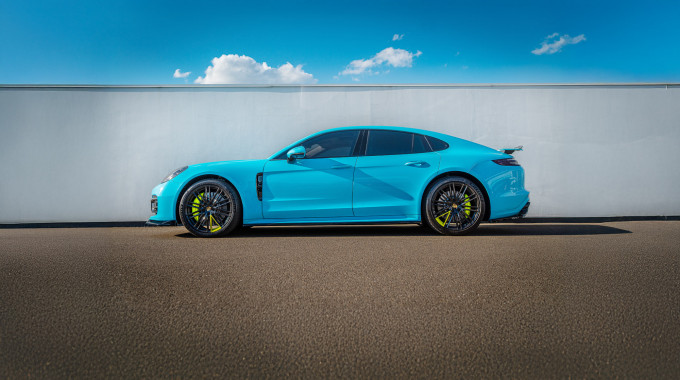
Car Safety Features [Part 5]: Seeing the Light
A primary safety rule is “see and be seen.” Automakers have made major strides in lighting technology, helping drivers to see farther down the road, improving visibility, and reducing the chances of blinding oncoming drivers.
As is the norm with new technologies, most of these first appeared on expensive vehicles, and worked their way down to lower-priced models. Some of these are now available at almost every price point. Here are some lighting safety features and how they work.
Automatic Headlamps
Now common on many vehicles, automatic headlights turn themselves on or off depending on ambient light. The headlight switch will have an “auto” function, and you can set it once and leave it like that.
The system uses a photoelectric sensor that’s usually on the dash or near the top of the windshield. If yours is dash-mounted, be careful not to toss items on top of it, which will block it and prevent it from working properly.
The sensor determines if it’s dark or light outside, and turns the headlights on or off accordingly. Most have a pre-set sensitivity level, but some will let you fine-tune it to come on earlier or later as it gets dark. In certain conditions, such as fog or rain, the sky might still be light enough that the sensor doesn’t activate, and you should turn your lights on manually. Some vehicles automatically turn on the headlights when the windshield wipers are on.
Automatic High-Beam Headlamps
The technology behind automatic high-beam headlamps is more advanced now, but these lights were first introduced by General Motors in the early 1950s.
Once activated, the system measures light ahead, looking for headlights or taillights. It also looks at street illumination, since you don’t need your high-beams if the road is already well-lit. On a dark road, the system turns on the high-beam headlamps. If it senses oncoming headlamps, or taillights on a car up ahead, it switches the high beams off, and then switches them back on when the road is dark again.
While these systems work well, they’re not foolproof. You should watch for situations where the sensors might not detect another vehicle ahead of time, such as if the oncoming driver is behind a hill, or rounding a curve ahead. If necessary, shut the high-beams off yourself to avoid blinding the other driver.
Adaptive Headlamps
These systems have headlamps that swivel when you turn the steering wheel, following the same direction and illuminating the area where you’re turning. Some adaptive headlamps can also swivel up or down on hills to better illuminate the road directly in front of you.
If you’re not sure if your vehicle has adaptive headlamps, watch ahead when you turn – it’s easiest to see on a dark road – to see if the headlight beams move sideways. Also, when you first start the car and the headlights are on, most will self-test by pivoting back and forth.
Some automakers are introducing very high-tech headlamps, known as adaptive driving beams. These lamps contain individual LED lights controlled by a computer, which automatically adjusts them depending on what’s needed. By illuminating only specific areas or intensity of the lamp, these can act as regular headlamps, as high-beam headlamps, or even as a combination that can illuminate the road farther ahead but not blind an oncoming driver, as well as light up curves. These are available in several countries but, as of this writing, are not yet acceptable for use in Canada under current federal transportation regulations.
Some vehicles include cornering lights, another technology that’s been around for a long time. These are fixed-in-place auxiliary lights near the headlamps, but they don’t light up when the headlamps are turned on. Instead, the light on the appropriate side illuminates when you activate the turn signal, or when you turn the steering wheel. This helps to light up the corner as you make your turn.
Headlamps
Driver safety depends on being able to see what’s ahead, and automakers are always looking at the brightest options. However, brighter lights are usually pricier lights, which can help determine what type your vehicle has. These include halogen, high-intensity discharge, and LED.
Halogen lights
Halogen bulbs are the least expensive and aren’t as bright as the other two. They are incandescent lights with a tungsten filament, and contain halogen gas that helps them stay bright longer. They produce a lot of heat, and usually have a yellowish glow.
HID (High-Intensity Discharge) lights
High-intensity discharge lights are known as HID or xenon bulbs, for the xenon gas inside them. They were commonly used on premium vehicles as a step up from halogen bulbs, but their popularity is waning as more automakers move to LEDs. They are filled with gas and use electrodes to create an arc to generate light, which usually has a blue tinge to it. HID headlamps can be brighter than LED, but they are complicated and expensive, and often don’t last as long.
LED (Light Emitting Diode) lights
LED stands for Light Emitting Diode. The diode is a semiconductor that produces light when an electric current passes through it. LED headlamps are much more energy-efficient than halogen or xenon bulbs.
Most vehicles, even at lower price points, have LED taillights. They’re very bright and they also illuminate a split-second faster than an incandescent bulb. More automakers are also adding LED headlights to their vehicles as the price of them comes down.
One drawback to LED lights is that they create almost no heat, so they don’t melt snow when it falls on them. Be sure to clean snow off your lights so you’ll be visible to other drivers, and able to see ahead as far as possible.
More content about







